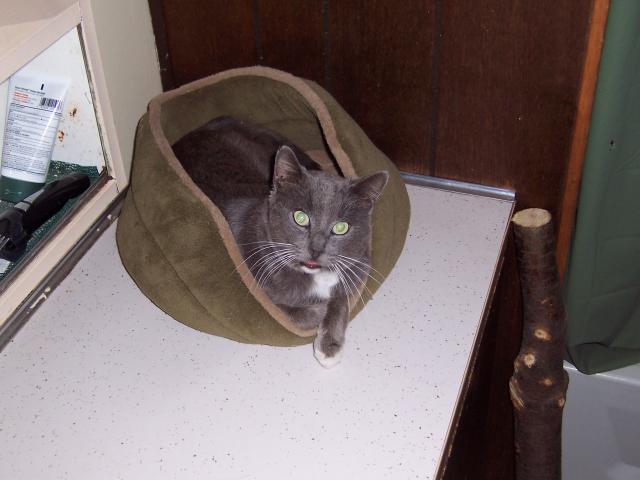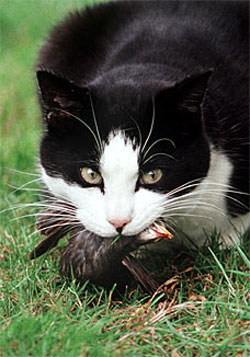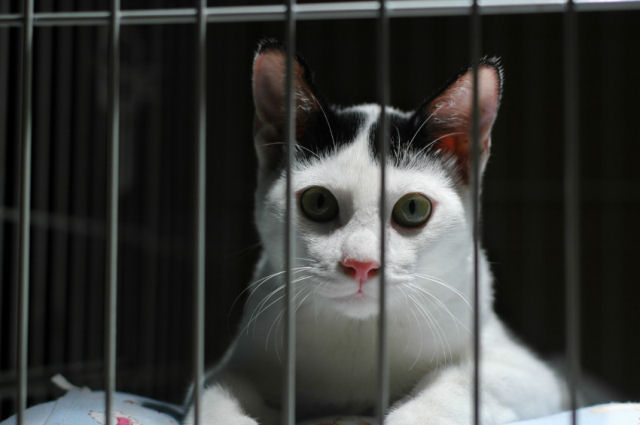The Problem
You might ask yourself why do feral cats even pose a problem? There are actually many reasons. I will start by listing a few.
HUMANS: No matter how you look at it, humans are the source of the feral cat problem in every way. Give that a little thought and you will find yourself shaking your head. Blaming the cats for any of this is like blaming a plant for growing in the wrong space.
THE CATS SUFFER: Feral cats live short, difficult lives. There lifespan rarely exceeds five years and when they die it is often violent, or painful. The cats living outdoors are usually burdened with parasites and disease. They also have to deal with people who harrass them, traffic, dogs, the elements, and native wildlife predators. This may seem like normal natural selection, but it is important to remember that these feral cats are domesticated varieties of their wild counterparts, brought to the U.S. by immigrants. Most would agree that it is our responsibility to see these cats live comfortable and stress free lives. After all, they never asked to be here.
I want to illustrate this point with a cat I recently brought indoors. My neighbor had been feeding him for a while and lately we noticed he was very thin and looked ill. I took him to the vet and it turns out not only does he have worms and an upper respiratory infection but he also has to deal with Feline Leukemia and FIV or the cats equivilant of HIV. Both of these diseases are fatal. The leukemia will be the one that kills him. Instead of euthanizing him on the spot he will live out his life until it gets to the point where he may have to be put down. I want to find him a home that will give him a nice retirement. Suffering like this can be easily avoided.

CONSERVATION IMPLICATIONS: Feral cats decimate native wildlife populations, especially birds and rodents. This can partly be blamed on higher than normal population densities. Ive heard estimates as high as 150 million cats in the United States and half of those are homeless or feral. That is a much higher density than our native cats probably ever were. The domestic cat has the largest prey base of any cat species on earth. They will kill and consume anything they can overpower, from a gnat to an adult rabbit. I have seen my cat eat a trail of ants in my house one by one like a Texas Horned Lizard. North American native cats have less varied diets and were historically spread over large territories across the country. This way, the predator/prey populations remained at equilibrium and fluctuated normally. The domestic feral cat has much smaller territories and will congregate around stable food sources and form colonies. Even a well fed cat will hunt, the instincts will always be there, you cannot teach a cat not to hunt. Feral cats eating from human food bowls will still take a toll on wildlife. Although to a lesser degree.

THEY BURDEN SHELTERS: The gestation or pregnancy of a female cat is 60 days, they nurse an average litter size of 4 between 7-8 weeks. Once the kittens are weaned the mother or "queen" goes into estrus for about 2 weeks. One female cat is theoretically capable of producing 10-15 kittens a year. If they all survive and half of those are female cats with the same litter sizes, one cat can turn into almost 70 in a year. Soon the problem becomes out of control. Im sure if you ask any animal control shelter or any rescue group for that matter about the feral cat problem and pet overpopulation they will have much to tell you. In franklin county Illinois alone they took in 855 cats in 2006 and Euthanized 89.1% of those.

THEY HARBOR DISEASE: This is more of a problem with the large and crowded feral cat colonies. Diseases such as Feline Lukemia Virus or FELV, Feline Immunodeficiency Virus, or FIV, upper respiratory infections, roundworms, fleas, etc all perpetuate and persisit as long as the colony does. These diseases can also be passed onto our native cats, even cougars. The protozoan Toxoplasma gondii is sometimes present in cat feces and if it comes into contact with pregnat women it can cause miscarrages and the disease Toxoplasmosis.
|